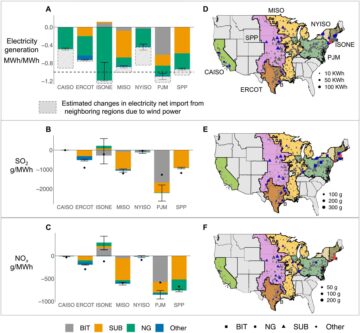A few weeks ago, I drove by an empty lot that I drive by frequently. It’s around the corner from my house, but it finally caught my eye for some reason.
I grew up in the 80s, and that corner planter area just screamed gas station. Most newer gas stations are bigger and aren’t oriented catty-corner to the street, but corner stores that literally faced the corner were a lot more common 3 or 4 decades ago, so it became pretty obvious what was once there. Here’s an example of a surviving corner store elsewhere in the area:
Like the abandoned lot, the convenience store was further back, the pumps were closer to the street, and the landscaping with gravel was at the corner itself.
Until relatively recently, gas stations were basically the only girl in town for keeping your car fueled. They’re still a big part of the automotive scene, and will still be for at least 1-2 decades. Even as we work toward getting away from gas stations, knowing what makes them tick helps us understand the whole industry better.
Why Did This Station Fail?
With this in mind, I decided to perform the best post-mortem analysis I could on this dead gas station around the corner from me. Looking at property records confirmed my analysis. The station was originally opened up in the mid 1970s and owned by Gas-A-Mat. That’s a chain of stations I’ve never heard of, but apparently it’s still a player in the Colorado market and used to be bigger in Texas and New Mexico.
The station was sold to some sort of property holding and investment company in 1982. 1996 was the first year where I could get sharp-ish aerial imagery of the lot, and by then, the building was still up, but it had been fenced off, indicating abandonment, so the holding company did not continue operating a gas station.
Let’s look at the vacant lot again:
In some ways, it’s the ideal spot for a gas station. It’s next to the intersection of two main streets in town, and living here, I know that they were both busy even in the 1980s. I can see why someone would think this would be an ideal place to put a gas station and make money.
On the other hand, it has some big things playing against it. The railroad and railroad crossing, combined with a median that blocks people from turning left, makes it very difficult for anyone coming from the left side of the image to turn into the gas station. I know when I’ve seen a difficult station to get to in the past, I’ve usually driven on to another one.
The railroad also cuts off the main street on the left and top of the image from the gas station. Sure, you’ll see the sign, and that there’s a station there, but you can’t easily turn into it from that street. Whether you’re heading one way or heading the other, you’re cut off from it and have to go through a small maze to get to it.
The only place that it’s convenient for is people heading from right to left along the street at bottom. For them, it was an easy right turn into the station. The little side street would seem like a good access for the station, but the neighborhoods behind the gas station were all farmer’s fields in the 1970s, so few customers would ever come from that direction.
Bottom line: the gas station died because the people who built it didn’t think enough about the needs of the drivers they wanted to serve.
How We Can Apply This Lesson To The EV Transition
An article last month by one of my coworkers shows that people considering putting in EV charging stations may be making the same mistake. Florida’s legislature was pushing to ban cities from requiring gas station to put in EV charging stations. Like my colleague, I think that’s a foolish move because local knowledge is king. Ignoring local knowledge is why Afghanistan’s western-installed government fell within days of US forces pulling out, and in most other areas of public life, you’ll fail just as miserably without relying on local knowledge.
Because cities are run by locals, the only thing a state or federal government has any business prohibiting is civil rights violations and corruption. Doing much more than that will cripple their ability to actually run things properly.
On the other hand, I disagree that gas stations are an ideal place to put EV charging stations.
Like the people who put in the failed Gas-A-Mat station near my house, I can understand why it would seem like a good idea on the surface. Gas stations serve a lot of cars, so naturally you’d want to put charging where cars go, right?
But it’s important to consider that EVs do very little of their charging at public stations. For people on road trips, and for people who did an unusual amount of driving that day, DC fast charging stations are essential. They allow you to get enough charge to get to the next town or finish running your errands. However, nobody wants to hang out at a gas station for more than 5 minutes to grab snacks. If there’s a lot of charging to be done, most people would rather just plug in the car at home and let it charge while they sleep.
The needs of most EV drivers on most days just don’t align with the gas station business model at all.
The good news for gas station owners is that they presently make very little on the fuel at the pumps. Most of the money goes to the oil company, refiners, and taxes. At most, the owners I’ve talked to say they make maybe $.10 per gallon. Usually it’s closer to 5 cents. For a vehicle with a 20-gallon tank, that’s just $1-2 per fill-up. The real money at a gas station is made selling drinks, snacks, alcohol, and cigarettes.
If gas stations want to be a part of the EV transition, they need to think about how to keep people coming for the snacks. Gas was a good way to draw people in, but in the future, most charging will happen at work or at home. If Aptera and Sono are any indication, there will even come a time that charging will largely be grid-free (but that’s going to require better solar cells than exist today, so that’s probably at least 20 years out).
To stay relevant, gas stations need to be more like a restaurant and less like a place you’d just grab a soda. People will need a cool or warm place to sit for a couple minutes and use their phones while the car charges. Offering something on the level of QuikTrip where there’s a great assortment of good food either to-go or to sit and eat will keep people coming to charge.
If gas stations just slap a fast charger out with the gas pumps and hope that their business model survives the EV transition, they’ll go the way of the Gas-A-Mat that used to be down the street from me.
Appreciate CleanTechnica’s originality? Consider becoming a CleanTechnica Member, Supporter, Technician, or Ambassador — or a patron on Patreon.

Source: https://cleantechnica.com/2021/10/27/why-we-cant-treat-ev-charging-like-gas-stations/
- Abandonment
- access
- Advertise
- Alcohol
- All
- analysis
- AREA
- around
- article
- automotive
- Ban
- BEST
- Building
- business
- business model
- car
- cars
- caught
- charge
- charges
- charging
- charging stations
- Cities
- cleantech
- Cleantech Talk
- closer
- Colorado
- coming
- Common
- company
- continue
- Corruption
- Couple
- Customers
- day
- dc
- dead
- DID
- died
- driven
- driving
- eat
- EV
- eye
- FAST
- Federal
- Federal government
- Fields
- Finally
- First
- Fuel
- future
- GAS
- good
- Government
- grab
- Guest
- here
- Home
- House
- How
- How To
- HTTPS
- idea
- image
- industry
- investment
- IT
- keeping
- King
- knowledge
- Level
- Line
- local
- Making
- Maps
- Market
- Mexico
- model
- money
- move
- Near
- news
- offering
- Oil
- operating
- Other
- owners
- Patreon
- People
- phones
- player
- podcast
- property
- public
- pulling
- pumps
- records
- restaurant
- Run
- running
- sleep
- small
- snacks
- So
- solar
- sold
- Spot
- State
- stay
- store
- stores
- street
- Surface
- Taxes
- texas
- The Future
- time
- top
- treat
- us
- vehicle
- WHO
- within
- Work
- year
- years









